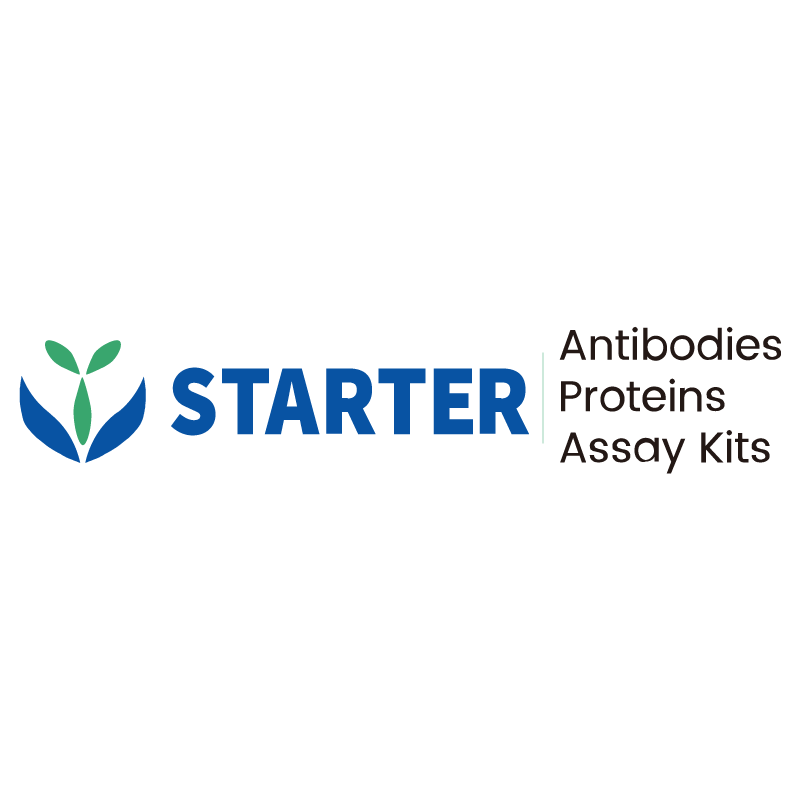WB result of ASGR1 Rabbit pAb
Primary antibody: ASGR1 Rabbit pAb at 1/1000 dilution
Lane 1: HepG2 whole cell lysate 20 µg
Secondary antibody: Goat Anti-rabbit IgG, (H+L), HRP conjugated at 1/10000 dilution
Predicted MW: 33 kDa
Observed MW: 50 kDa
Product Details
Product Details
Product Specification
| Host | Rabbit |
| Antigen | ASGR1 |
| Synonyms | Asialoglycoprotein receptor 1; ASGP-R 1; C-type lectin domain family 4 member H1; ASGPR 1; Hepatic lectin H1 (HL-1); CLEC4H1 |
| Immunogen | Synthetic Peptide |
| Location | Membrane |
| Accession | P07306 |
| Antibody Type | Polyclonal antibody |
| Isotype | IgG |
| Application | WB, IHC-P |
| Reactivity | Hu |
| Positive Sample | HepG2 |
| Purification | Immunogen Affinity |
| Concentration | 0.5 mg/ml |
| Conjugation | Unconjugated |
| Physical Appearance | Liquid |
| Storage Buffer | PBS, 40% Glycerol, 0.05% BSA, 0.03% Proclin 300 |
| Stability & Storage | 12 months from date of receipt / reconstitution, -20 °C as supplied |
Dilution
| application | dilution | species |
| WB | 1:1000 | Hu |
| IHC-P | 1:500 | Hu |
Background
The ASGR1 protein, also known as the asialoglycoprotein receptor 1, is a key component of the asialoglycoprotein receptor complex, which is involved in the recognition and uptake of glycoproteins with terminal galactose or N-acetylgalactosamine residues. This receptor is primarily expressed in hepatocytes and plays a crucial role in the clearance of circulating glycoproteins, contributing to the maintenance of homeostasis. The ASGR1 gene is located on chromosome 17 and encodes a 46 kDa glycoprotein that forms a complex with the ASGR2 subunit. Recent studies have also highlighted the potential role of ASGR1 in various metabolic processes and its implications in diseases such as atherosclerosis.
Picture
Picture
Western Blot
Immunohistochemistry
IHC shows positive staining in paraffin-embedded human liver. Anti-ASGR1 antibody was used at 1/500 dilution, followed by a HRP Polymer for Mouse & Rabbit IgG (ready to use). Counterstained with hematoxylin. Heat mediated antigen retrieval with Tris/EDTA buffer pH9.0 was performed before commencing with IHC staining protocol.
Negative control: IHC shows negative staining in paraffin-embedded human tonsil. Anti-ASGR1 antibody was used at 1/500 dilution, followed by a HRP Polymer for Mouse & Rabbit IgG (ready to use). Counterstained with hematoxylin. Heat mediated antigen retrieval with Tris/EDTA buffer pH9.0 was performed before commencing with IHC staining protocol.
Negative control: IHC shows negative staining in paraffin-embedded human placenta. Anti-ASGR1 antibody was used at 1/500 dilution, followed by a HRP Polymer for Mouse & Rabbit IgG (ready to use). Counterstained with hematoxylin. Heat mediated antigen retrieval with Tris/EDTA buffer pH9.0 was performed before commencing with IHC staining protocol.
IHC shows positive staining in paraffin-embedded human hepatocellular carcinoma. Anti-ASGR1 antibody was used at 1/500 dilution, followed by a HRP Polymer for Mouse & Rabbit IgG (ready to use). Counterstained with hematoxylin. Heat mediated antigen retrieval with Tris/EDTA buffer pH9.0 was performed before commencing with IHC staining protocol.
Negative control: IHC shows negative staining in paraffin-embedded human ovarian cancer. Anti-ASGR1 antibody was used at 1/500 dilution, followed by a HRP Polymer for Mouse & Rabbit IgG (ready to use). Counterstained with hematoxylin. Heat mediated antigen retrieval with Tris/EDTA buffer pH9.0 was performed before commencing with IHC staining protocol.


